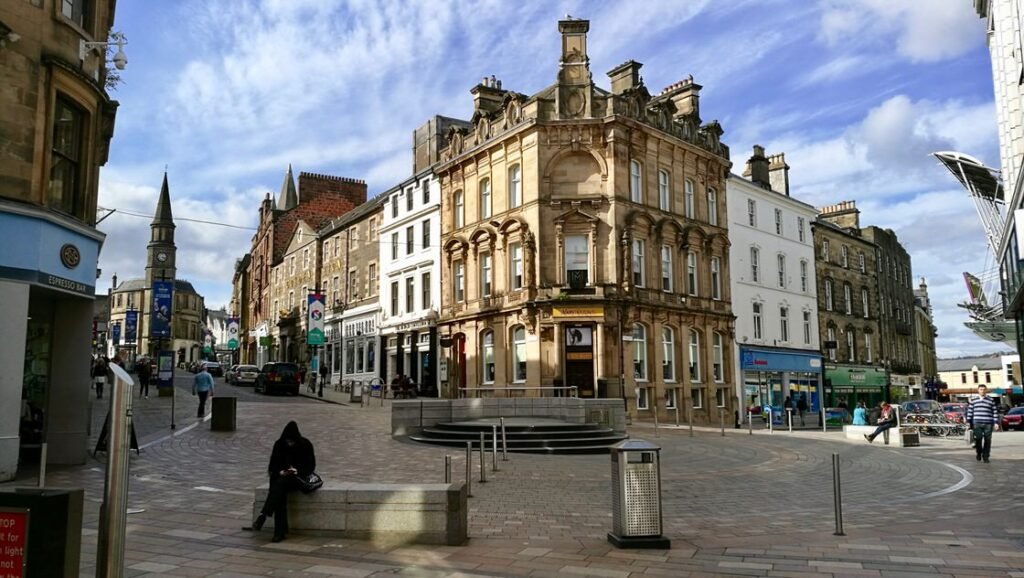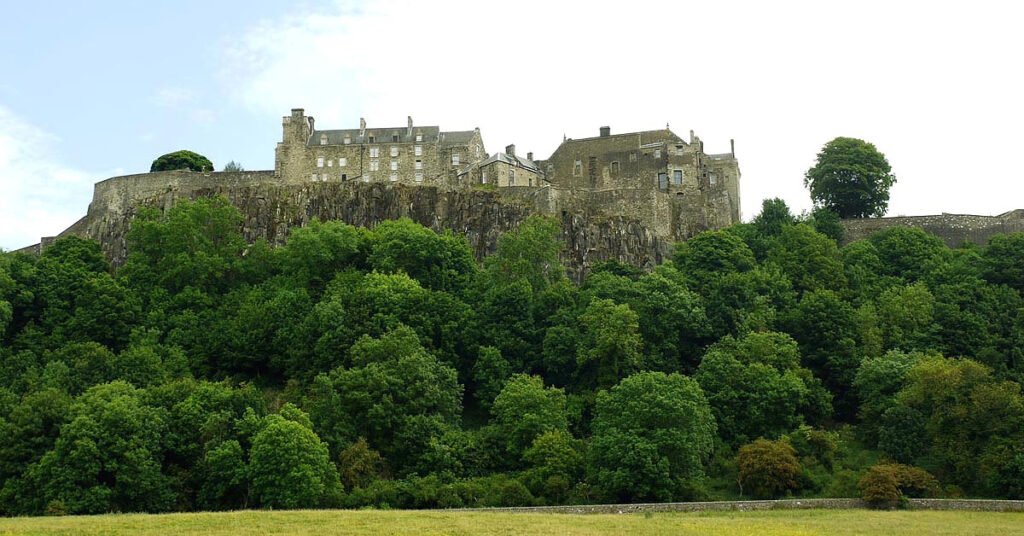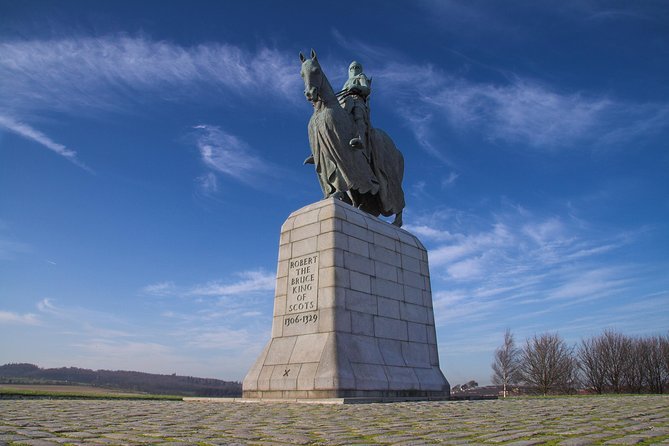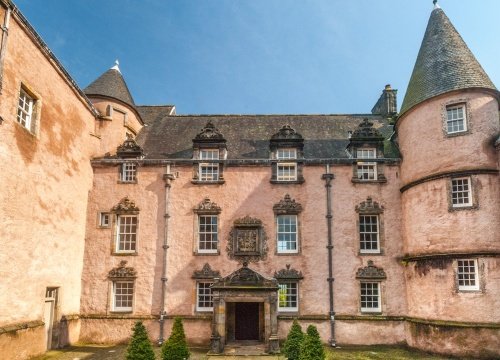Stirling city in central Scotland, situated on the River Forth, the administrative centre of the Stirling Unit, historically the county seat of Stirlingshire. 45,000 inhabitants.

- Stirling Castle (Gael. Caisteal Shruighlea) is a castle in Stirling, central Scotland, situated on a rock dominating the city, formerly guarding the easternmost bridge crossing over the River Forth, which was one of the main routes connecting the north and south of the country. As the site of the coronation and residence of many Scottish kings, as well as numerous clashes with the English, it is one of the most significant castles in the country and a subject of Scottish national pride.

- Wallace Monument (The National Wallace Monument) – a tower commemorating Scotland’s national hero, William Wallace. It is located on Abbey Craig Hill, near the city of Stirling. Designed by John Thomas Rochead, the 67-metre sandstone tower was completed in 1869. The tower is open to visitors all year round. Inside, there are rooms in which the figure of Wallace is depicted.

- The Battle of Bannockburn, which took place in 1314, was a significant conflict in Scottish history during the First War of Scottish Independence. It was a key moment in the struggle between the Scottish forces led by King Robert the Bruce and the English army led by King Edward II. Our Battle of Bannockburn Walking Tour is a must-see for anyone interested in Scottish history and culture. Unless otherwise requested, visitors should expect to spend most of their time on their feet as they explore the main area; the visit lasts approximately 60 minutes.

- Argyll’s Lodging is a 17th-century town-house in the Renaissance style, situated below Stirling Castle in Stirling, Scotland. It was a residence of William Alexander, 1st Earl of Stirling and later the Earls of Argyll.

- Stirling Bridge is an important stone bridge that crosses the River Forth in Stirling, Scotland. It is located near the site of the Battle of Stirling Bridge, where Sir William Wallace and Sir Andrew Moray defeated the forces of Edward I in 1297. The bridge was built in the 1400s or 1500s and replaced a series of wooden bridges. It is considered one of the finest medieval stone arch bridges in Scotland.

- Stirling Old Town is a historic part of the city, situated on the River Forth, known for its rich history and many historical monuments. It is a picturesque area with the best preserved city walls in Scotland, made of distinctive, dark volcanic stone.

